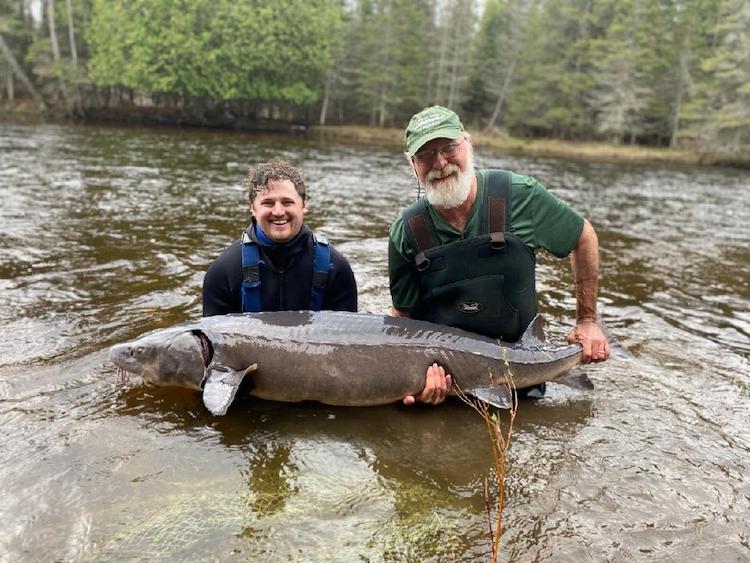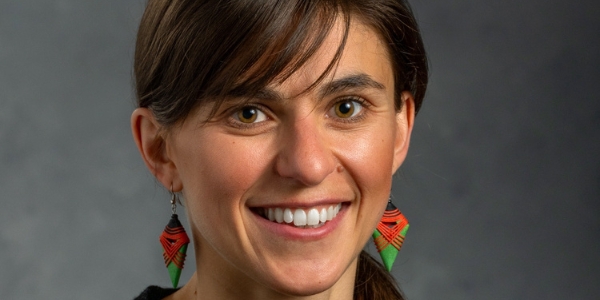
Five hundred juvenile sturgeons were released into the Saginaw River system last week as part of an ongoing effort to bring the giant fish back from the brink of extinction.
For more than 20 years, Michigan State University and the Michigan Department of Natural
Resources have partnered to rebuild Black Lake’s sturgeon population. Together, they
opened the Black Lake Stream Side Rearing Facility, located in Onaway, Michigan, and have supplied sturgeons to a variety of hatcheries.
Each spring, researchers, graduate students and undergraduates alike catch newly hatched sturgeons that are less than 1 inch long and raise them until August, when they’ve grown to a less vulnerable size, about 7 inches. Then, they stock the Black Lake as well as rivers around the state with the 3-month-old sturgeons. On Aug. 16, the community was invited to watch as the fish were set free in four locations along the Saginaw River.
MSU Professor Emeritus Kim Scribner has helped lead the program for more than two decades and, when he retired in January, he passed the torch to Scott Colborne, assistant professor in the Department of Fisheries and Wildlife’s Quantitative Fisheries Center. Scribner said the rearing facility gives sturgeons a better chance of surviving so that the Great Lakes sturgeon populations can grow. They’re also conducting research that’s led to important discoveries in the sources and levels of mortality during sturgeon early life stages and levels of sturgeon genetic diversity, helping the DNR make more informed management decisions.
So far, the hatchery has helped to double the adult population of lake sturgeons in Black Lake, and it’s increased populations in other Michigan bodies of water. The goal is that one day sturgeons will be self-sufficient so that the rearing facility isn’t needed anymore, said Ed Baker, manager for the DNR Marquette Fisheries Research Station. The DNR wants recreational sportsmen to enjoy the annual sturgeon fishing season without putting the population at risk.
“We don’t want to be stocking lake sturgeon in perpetuity,” Baker said. “We want to get the population to the point that it can sustain the recreational harvest that is occurring without that harvest causing the population to decline again.”
Lake sturgeons remind Colborne of African elephants. Much like the land giants, sturgeons are massive compared to the animals around them. Despite their size, they’re not predators. And there’s just something about them that Colborne can’t resist.
“They’re actually a very charismatic fish,” he said, a sentiment that’s echoed among others who’ve encountered the unique fish. “Once you interact with a sturgeon, you become fascinated by them.”
Lake sturgeon have barely changed in appearance through their 150-million-year history. With bony armor called scutes and a shark-like tail, they rightly earn their nickname of “living fossils.” They’re one of the oldest species to swim the Great Lakes and once were so plentiful that they were an important source of food for North American Indigenous tribes.
Sturgeons play an important role in nutrient cycling in the Great Lakes, Scribner said. As bottom feeders, they filter substrate through their gills and help distribute nutrients through the waters. They also eat invasive species like zebra mussels and round goby, helping to reduce their abundance.
The average lake sturgeon lives between 50 to 100 years, grows to about 4 to 6 feet long and weighs in at 30 to 80 pounds. However, they’re known to live up to 150 years, and they’ve been spotted as large as 8 feet long and as heavy as 300 pounds, according to Michigan Sea Grant.
Because they’re so large, they don’t have predators within the Great Lakes once they reach maturity. Humans are their main predator.
Read the full story here.




